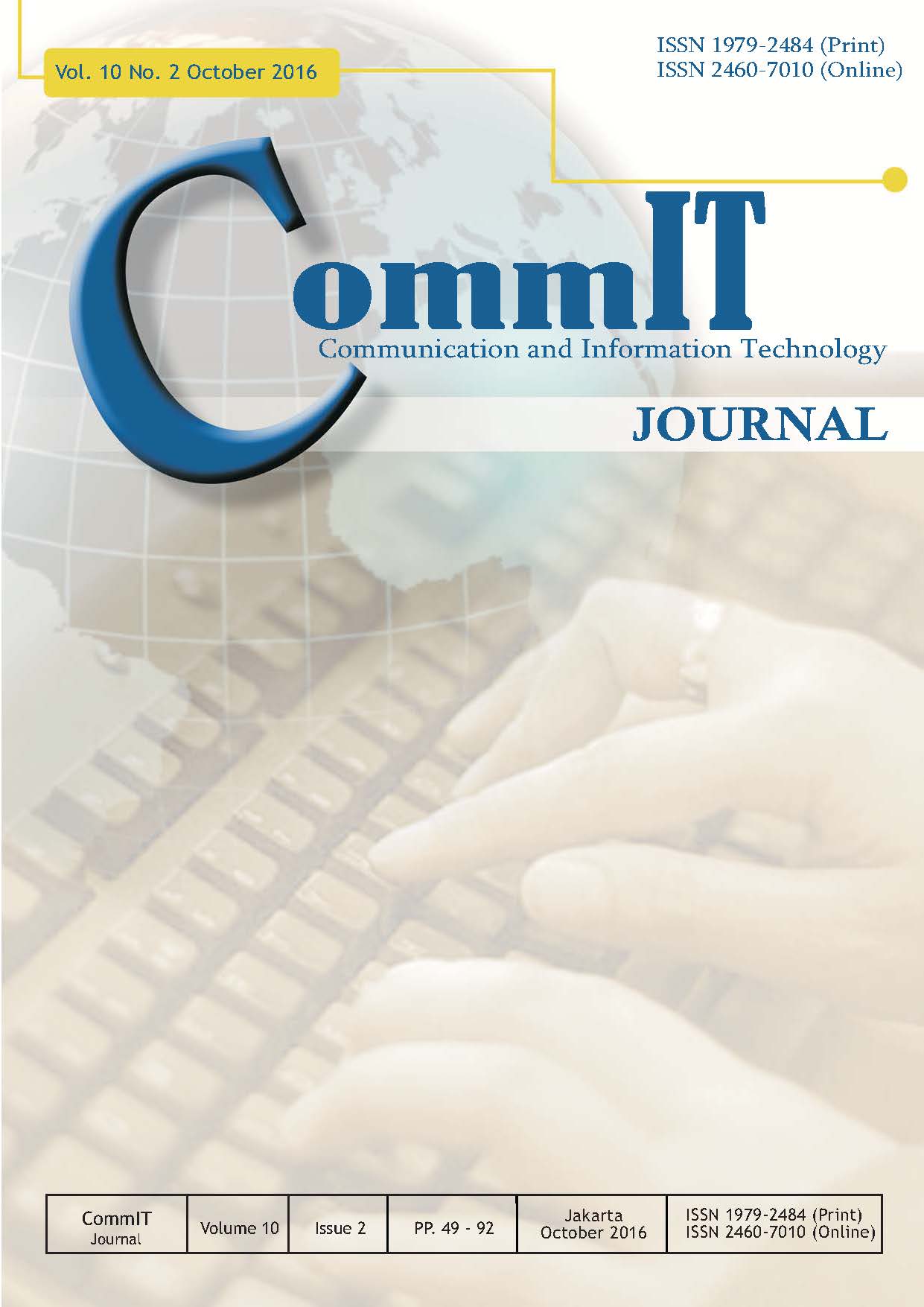Development of A Web-Based Information System for Material Inventory Control: The Case of An Automotive Company
DOI:
https://doi.org/10.21512/commit.v10i2.1579Keywords:
Inventory Control, Indirect Materials, Web Application, RUP MethodologyAbstract
Inventory control is controlling the materials movement to fulfill the requirements. The materials can from the direct and indirect materials. the indirect materials are the materials that cannot be calculated according to the bill of materials. Indirect materials need safety stocks, so the requirements can always be fulfilled, means it need the control and monitoring of their levels. To control the movement of the materials, each department have roles to control and information that need to be shared. PT XYZ is an automotive assembler company, the company need a tool to control the indirect materials inbound and outbound and control its stock. This research is to have the tool that will be a web-based program because to share the information throughout the department of planning, production, and logistics. In developing and implementing the program itself, the RUP methodology is used to guide in doing this research with having four phases and activities that support the research. The result is the program itself have been successful to fulfilled the user requirements. The program shows the real time information for the levels of the materials and also the inbound and outbound of the materials for the user to monitor its levels.References
in distribution logistics,†IFAC-PapersOnLine,
vol. 48, no. 3, pp. 1815–1820, 2015.
T. Robal, V. Viies, and M. Kruus, “The rational unified process with the†4+ 1†view model of software architecture-a way for modeling web applications.†in BalticDB&IS, 2002, pp. 119– 132.
J. Shah, Supply chain management: Text and Cases. Pearson Education India, 2009.
S. Routroy and S. K. Pradhan, “Analyzing the sourcing alternatives in an indian manufacturing company,†Journal of Advances in Management Research, vol. 10, no. 1, pp. 22–44, 2013.
P. Mishra and R. K. Sharma, “Benchmarking scm performance and empirical analysis: a case from paint industry,†Logistics Research, vol. 7, no. 1, pp. 1–16, 2014.
D. Arnold, K. Furmans, H. Isermann, A. Kuhn, and H. Tempelmeier, Handbuch logistik. Springer, 2008, vol. 3.
T. Becker, M. E. Beber, K. Windt, M.-T. H¨utt, and D. Helbing, “Flow control by periodic devices: a unifying language for the description of traffic, production, and metabolic systems,†Journal of Statistical Mechanics: Theory and Experiment, vol. 2011, no. 05, p. P05004, 2011.
P. Fiedler, M. Lange, and M. Schultze, “Supply logistics for the industrialized use of biomassprinciples and planning approach,†in 2007 International Symposium on Logistics and Industrial Informatics. IEEE, 2007, pp. 41–46.
S. Chopra and P. Meindl, “Supply chain management.strategy, planning & operation,†in DasSumma Summarum des Management. Springer, 2007, pp. 265–275.
M. T. Melo, S. Nickel, and F. Saldanha-da Gama,“Facility location and supply chain management–a review,†European journal of operational research,vol. 196, no. 2, pp. 401–412, 2009.
H. Min and G. Zhou, “Supply chain modeling: past, present and future,†Computers & industrial engineering, vol. 43, no. 1, pp. 231–249, 2002.
R. Ballard, “Methods of inventory monitoring and measurement,†Logistics Information Management, vol. 9, no. 3, pp. 11–18, 1996.
D. T. Bourgeois, “Information systems for businessand beyond,†Washington: The Saylor Academy, 2014.
P. Kruchten, The rational unified process: an introduction.
Addison-Wesley Professional, 2004.
J. Kovse and T. H¨arder, “Model-driven developmentof versioning systems: An evaluation of different approaches,†Technical report, University of Kaiserslautern, Kaiserslautern, Tech. Rep., 2005.
P. Y. Reyes-Delgado, M. Mora, H. A. Duran-Limon, L. C. Ro ´ıguez-Mart´ınez, R. V.O’Connor, and R. Mendoza-Gonzalez, “The strengths and weaknesses of software architecture design in the rup, msf, mbase and rup-soa methodologies: A conceptual review,†Computer Standards & Interfaces, vol. 47, pp. 24–41, 2016. 81
Downloads
Published
How to Cite
Issue
Section
License
Authors who publish with this journal agree to the following terms:
a. Authors retain copyright and grant the journal right of first publication with the work simultaneously licensed under a Creative Commons Attribution License - Share Alike that allows others to share the work with an acknowledgment of the work's authorship and initial publication in this journal.
b. Authors are able to enter into separate, additional contractual arrangements for the non-exclusive distribution of the journal's published version of the work (e.g., post it to an institutional repository or publish it in a book), with an acknowledgment of its initial publication in this journal.
c. Authors are permitted and encouraged to post their work online (e.g., in institutional repositories or on their website) prior to and during the submission process, as it can lead to productive exchanges, as well as earlier and greater citation of published work.
Â
USER RIGHTS
All articles published Open Access will be immediately and permanently free for everyone to read and download. We are continuously working with our author communities to select the best choice of license options, currently being defined for this journal as follows: Creative Commons Attribution-Share Alike (CC BY-SA)




















